Then&Now… diseaseandtechnologythroughtheages PartII AncientGreece 776BC •

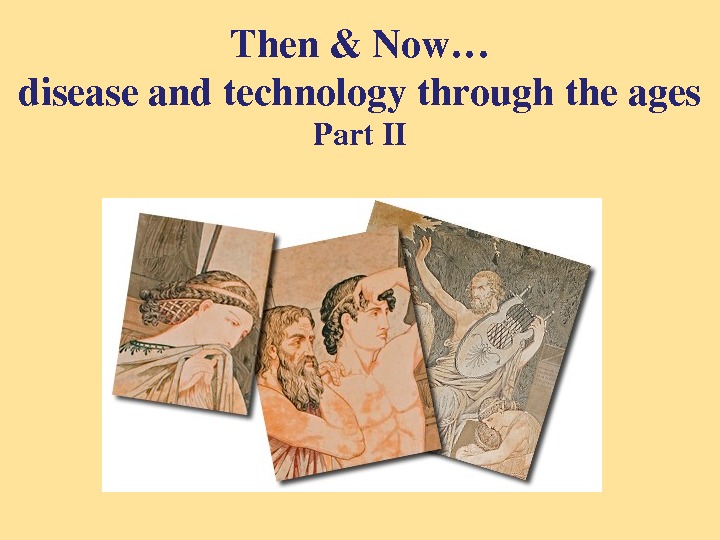
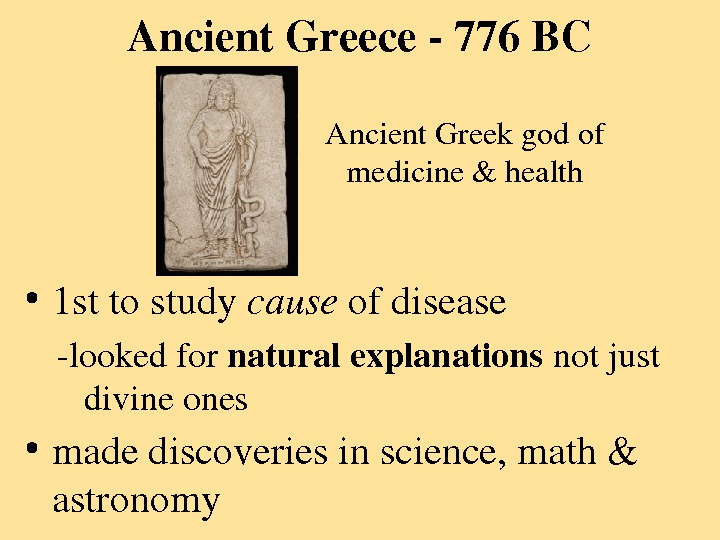
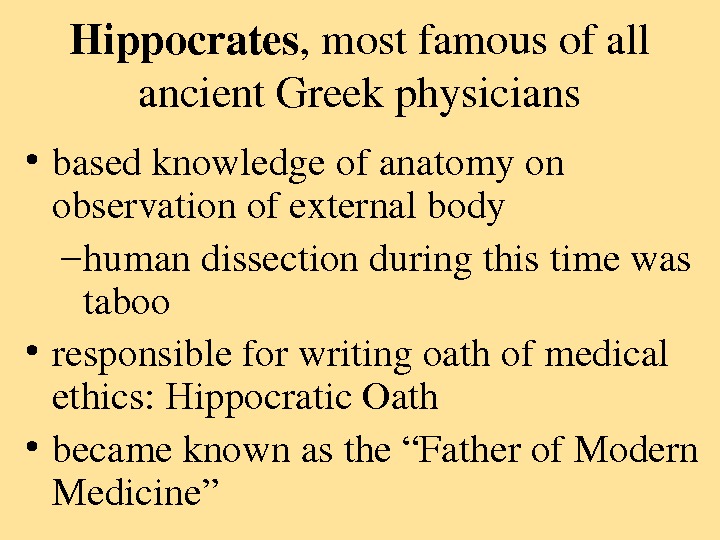

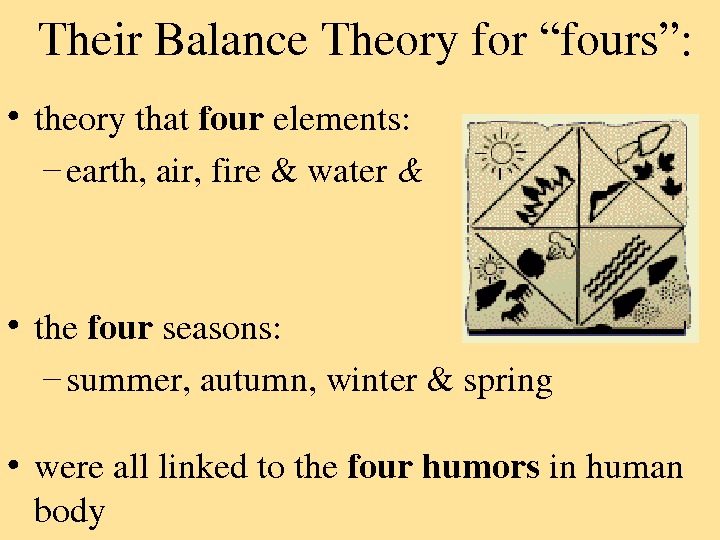
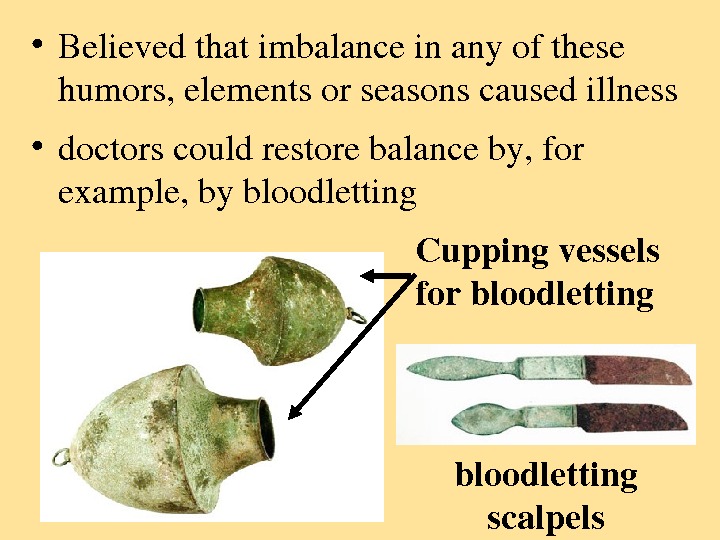
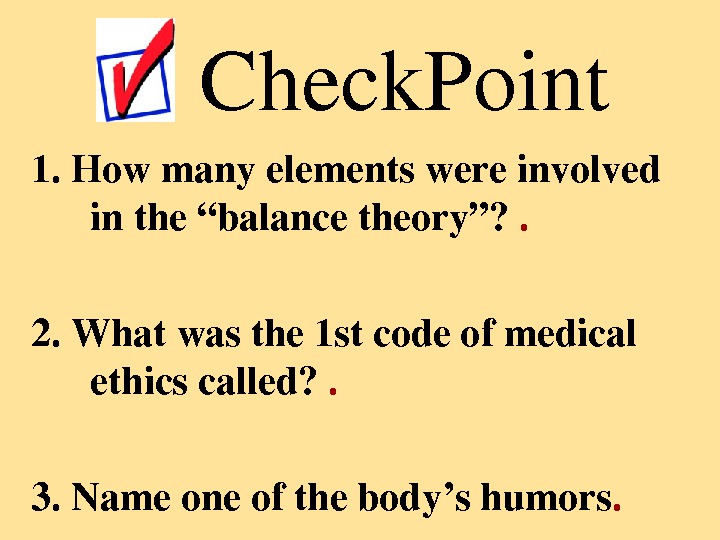
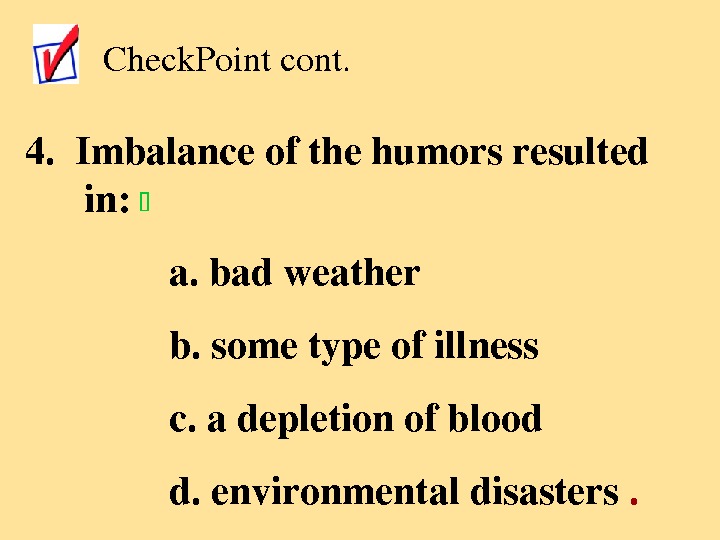
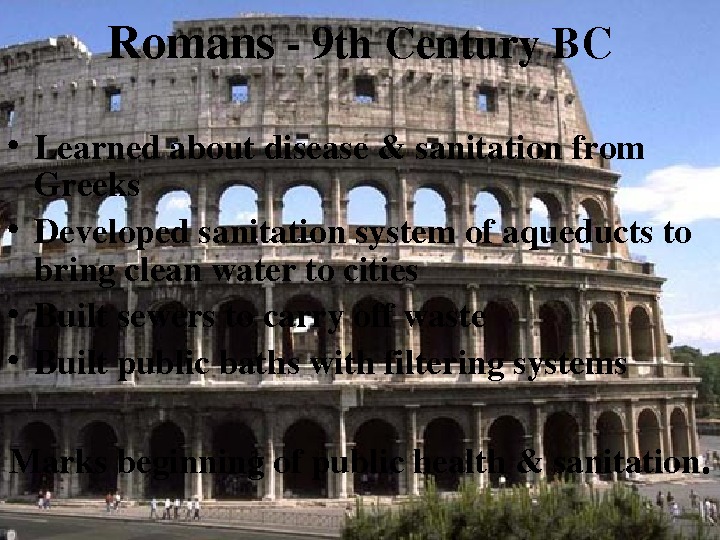


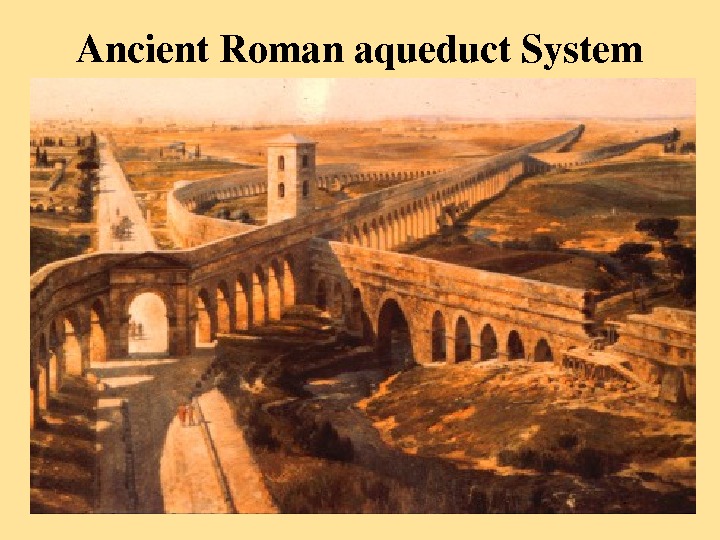
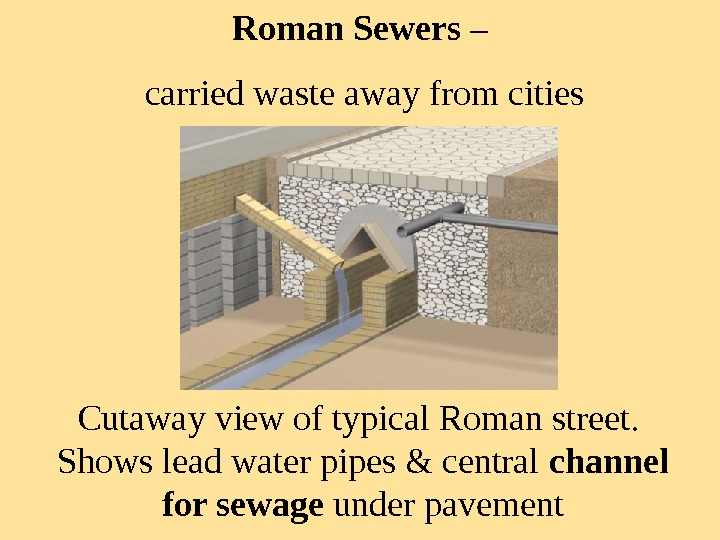

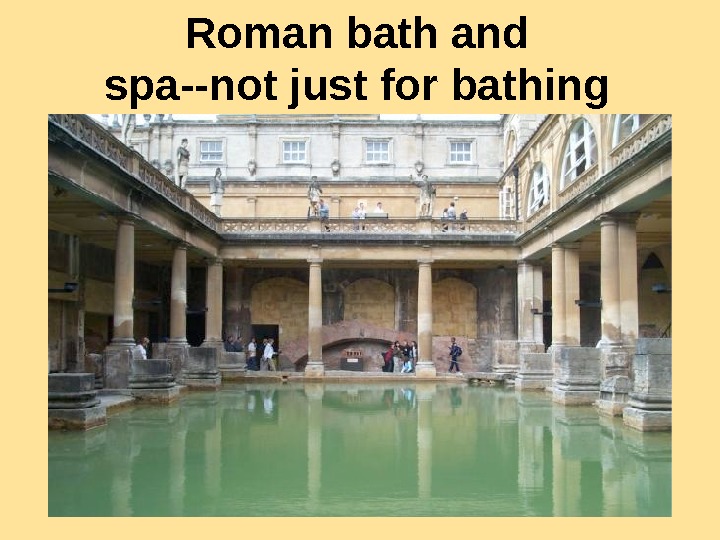
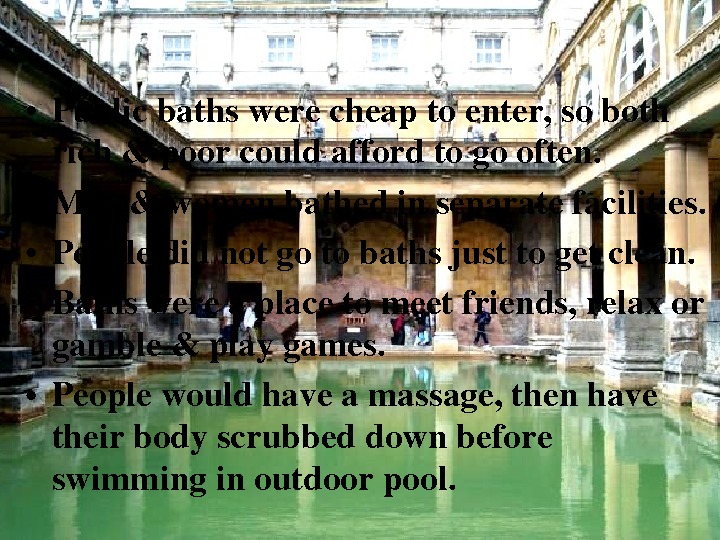
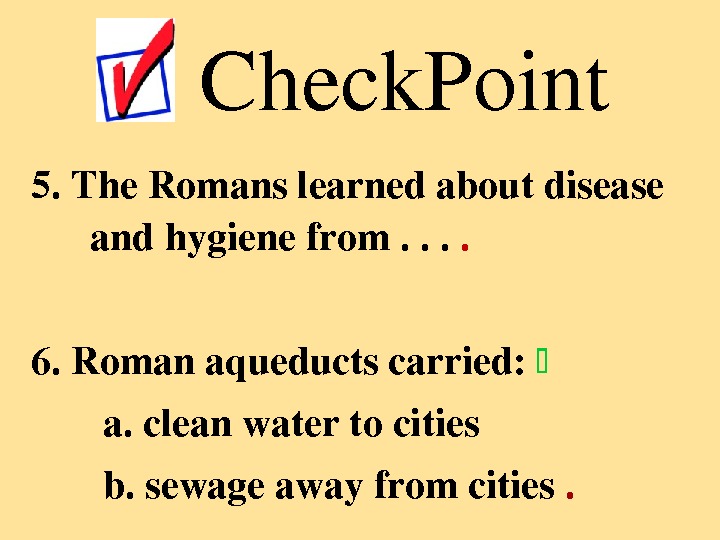

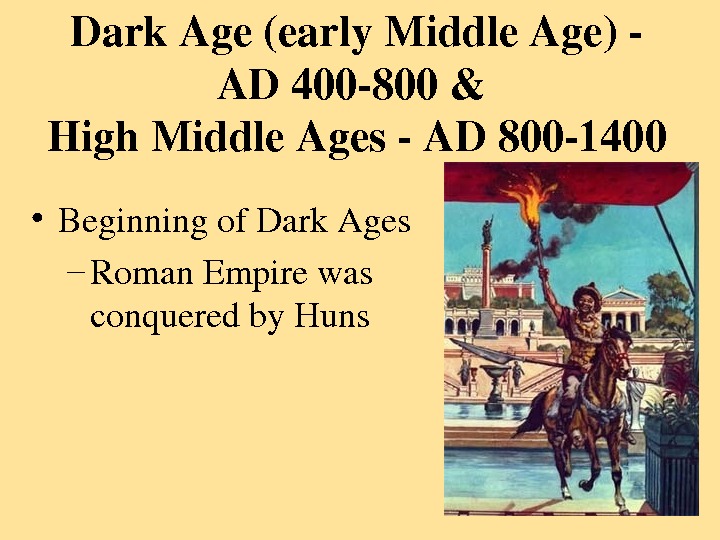
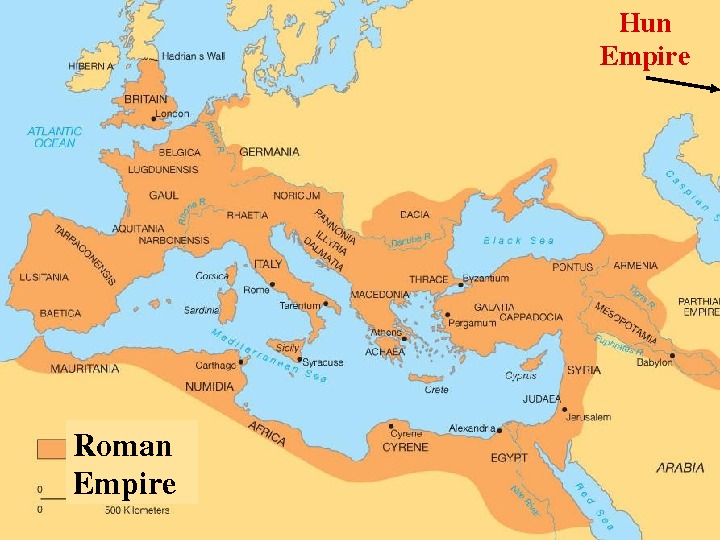


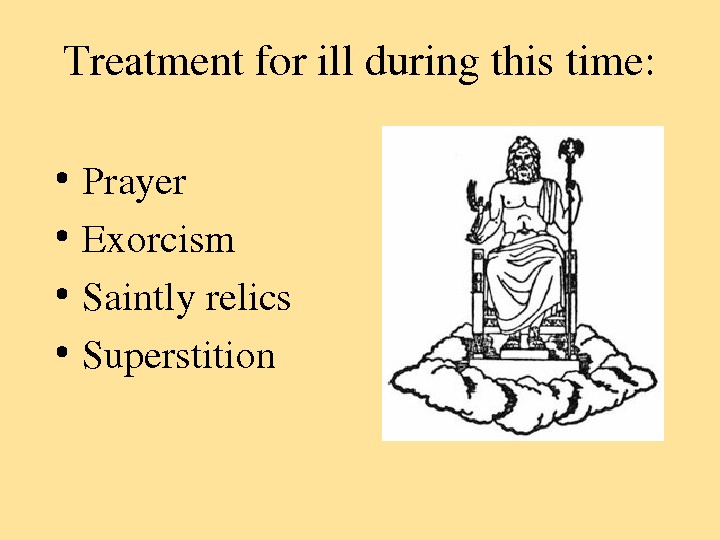
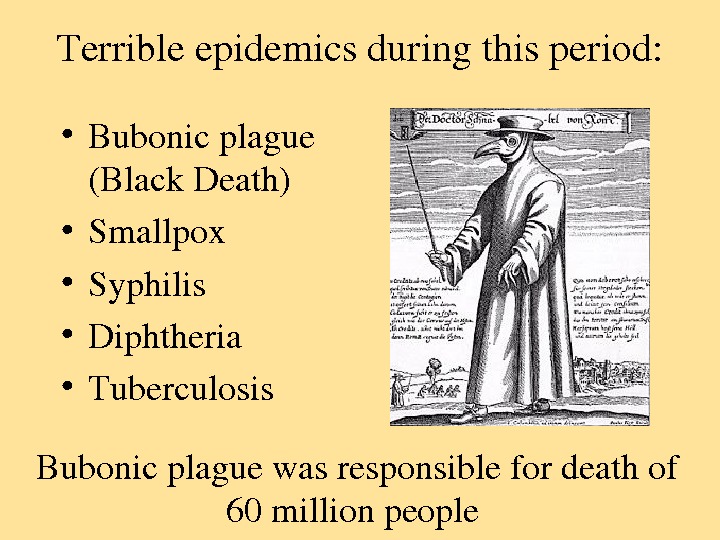
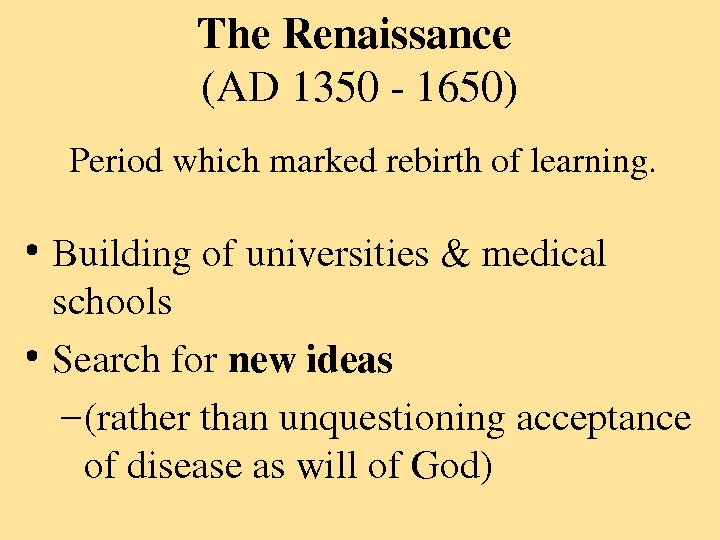
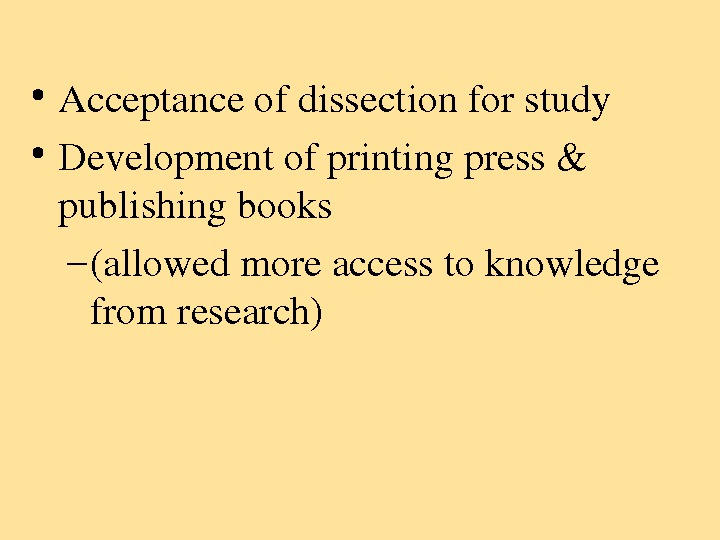
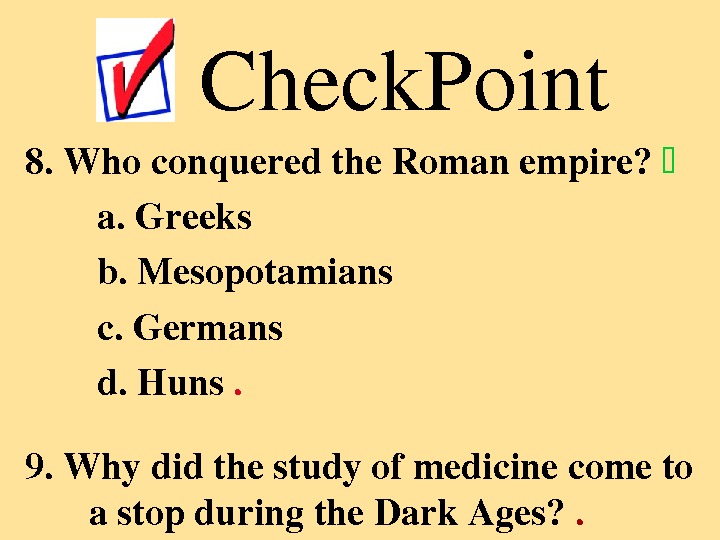
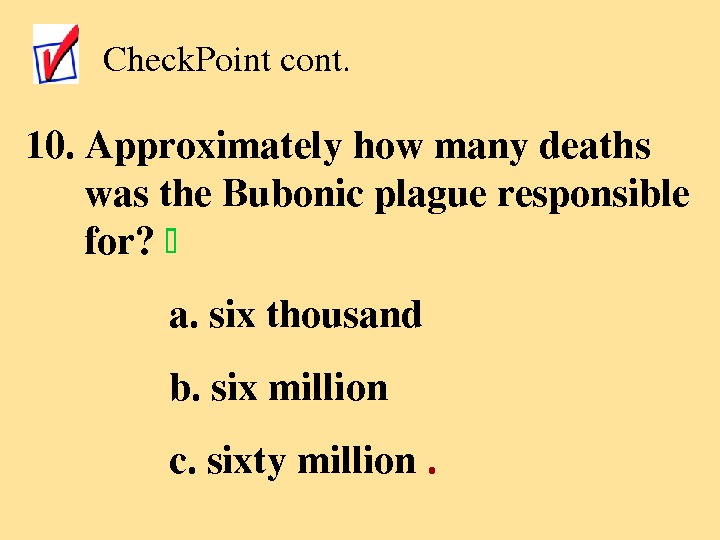
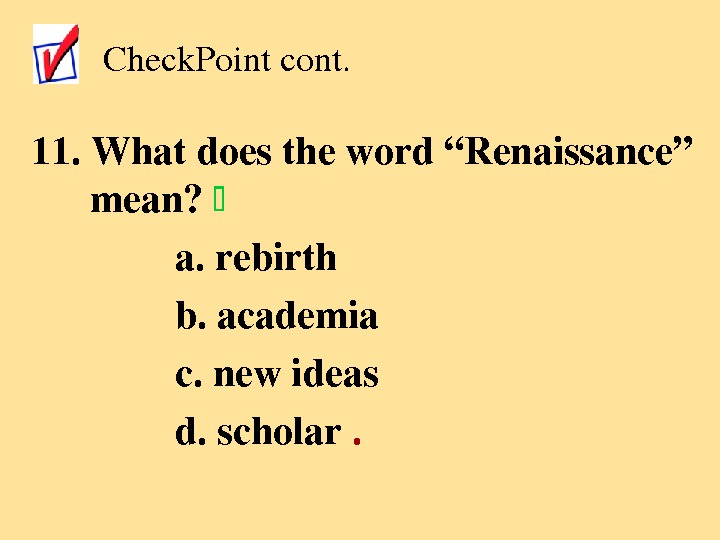
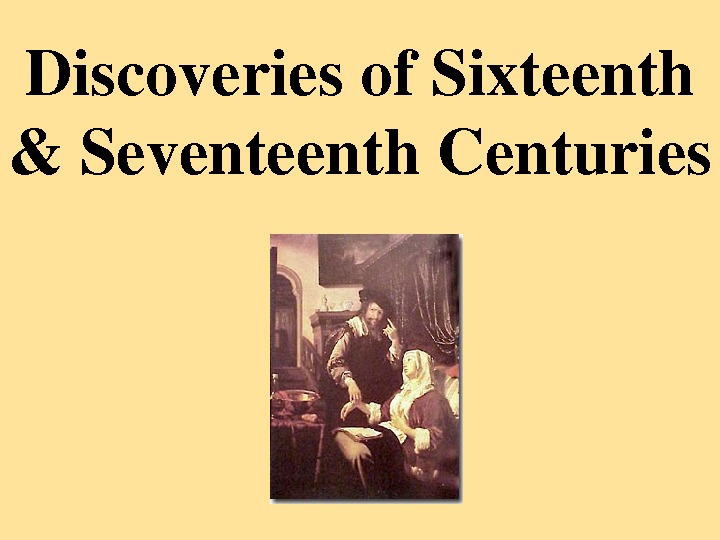
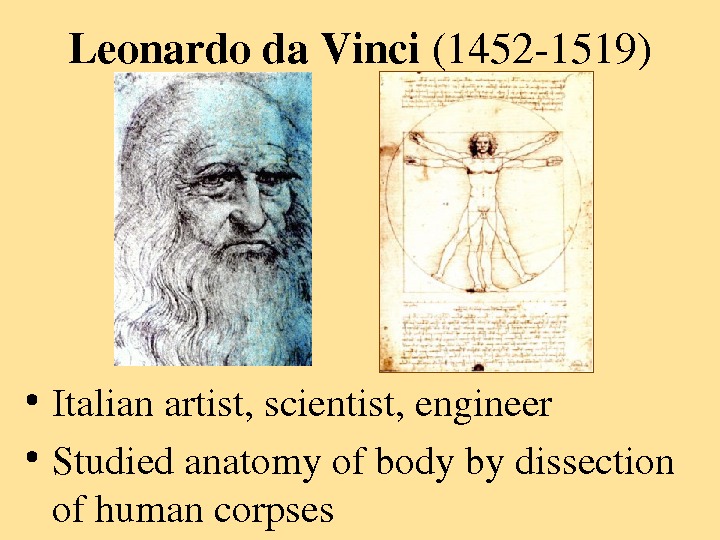
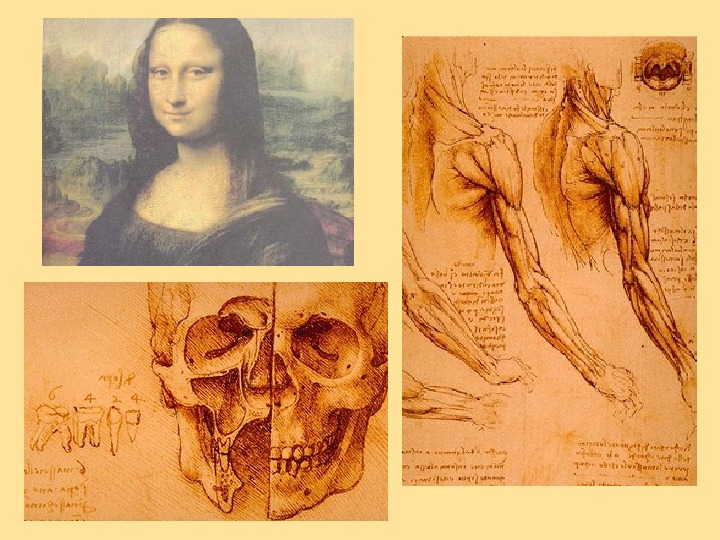
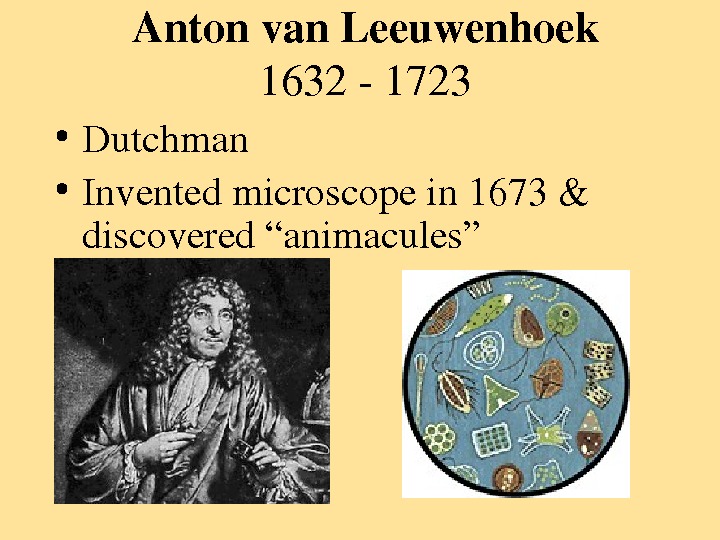


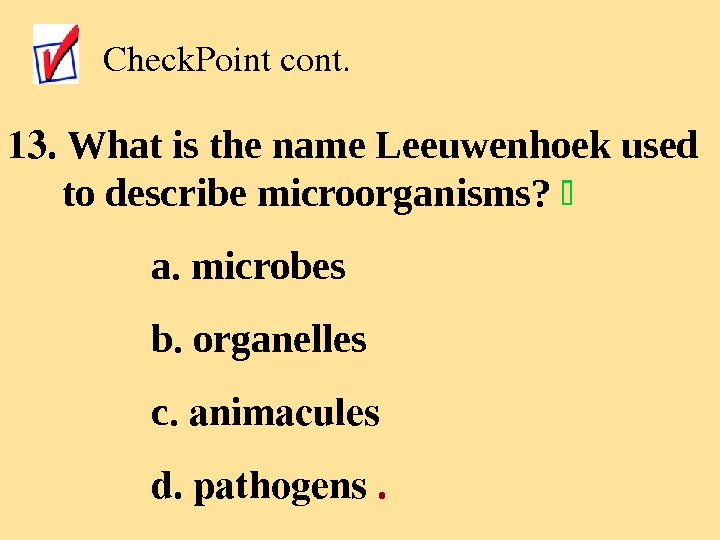
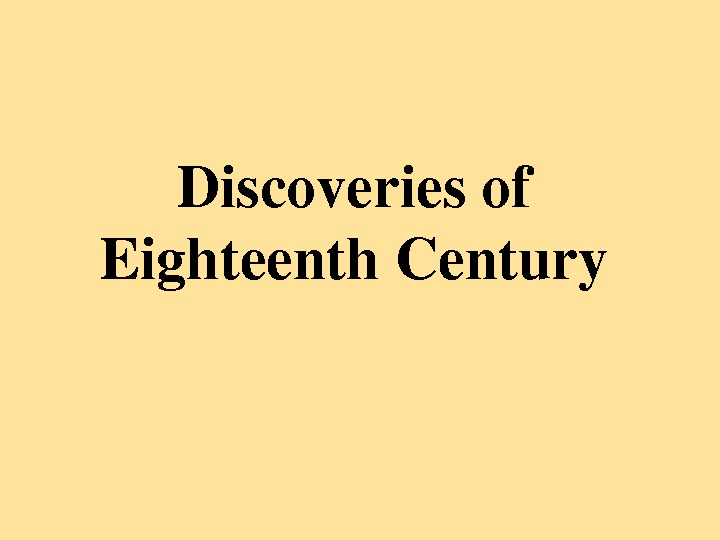
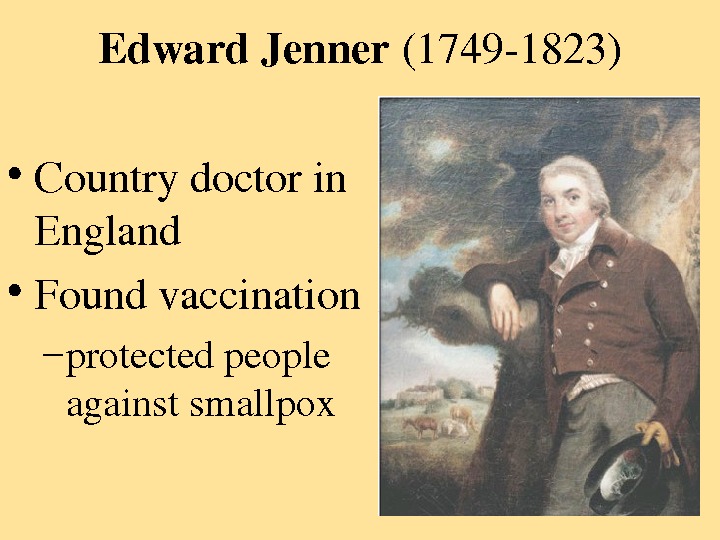
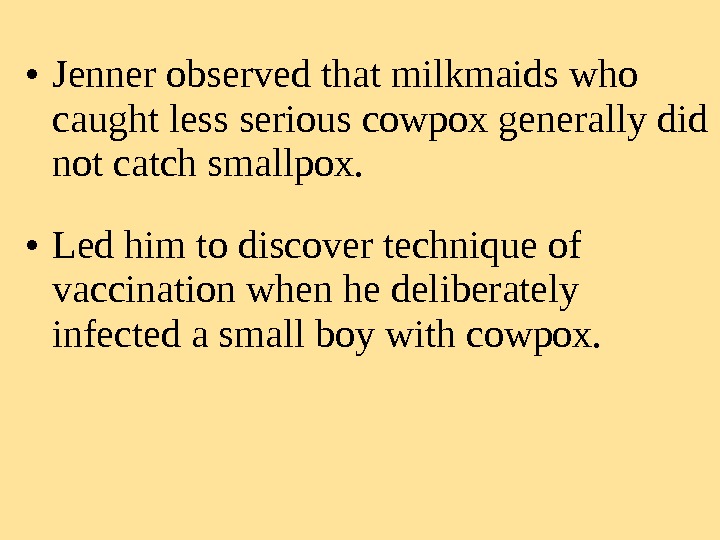
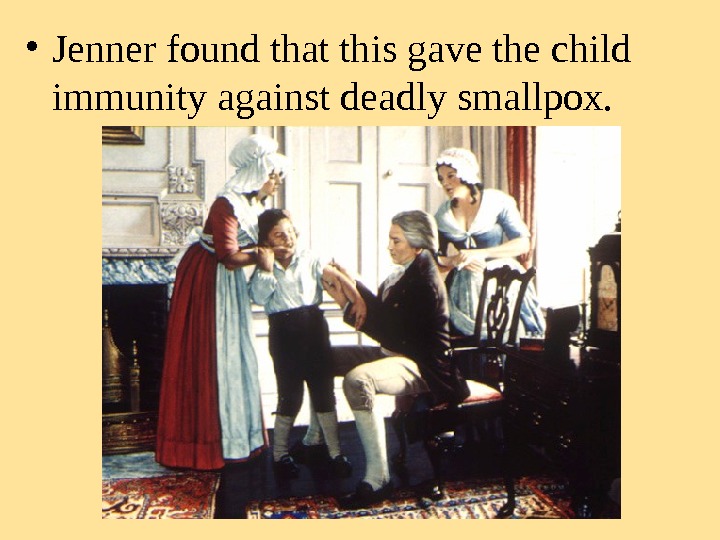
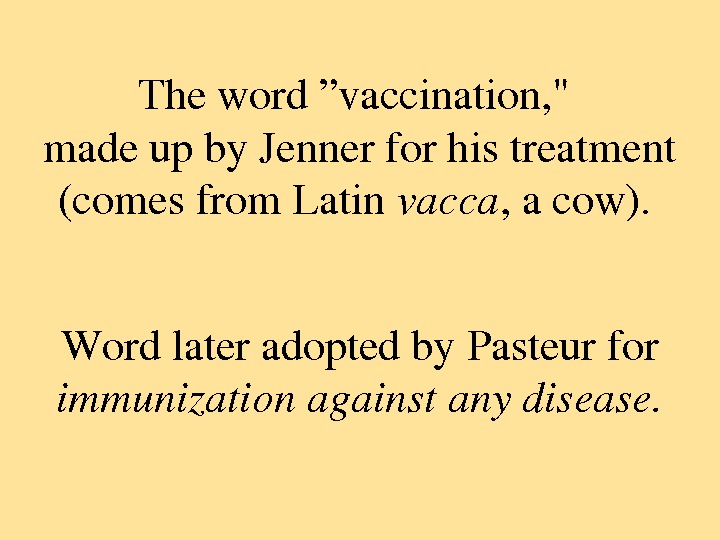


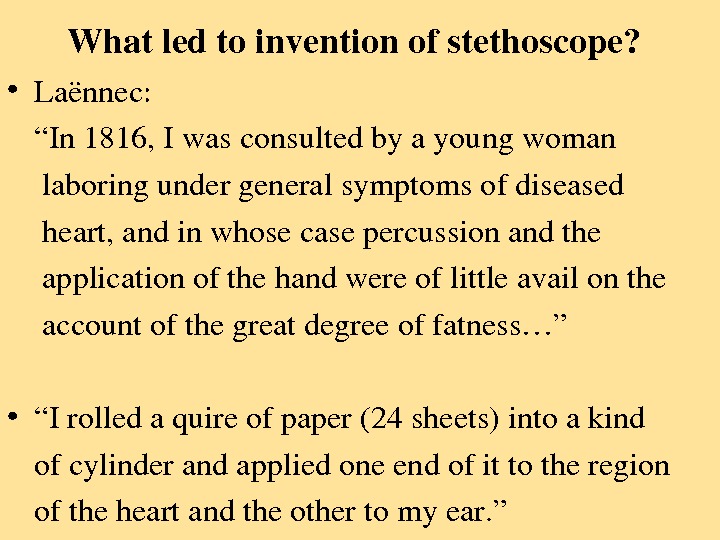
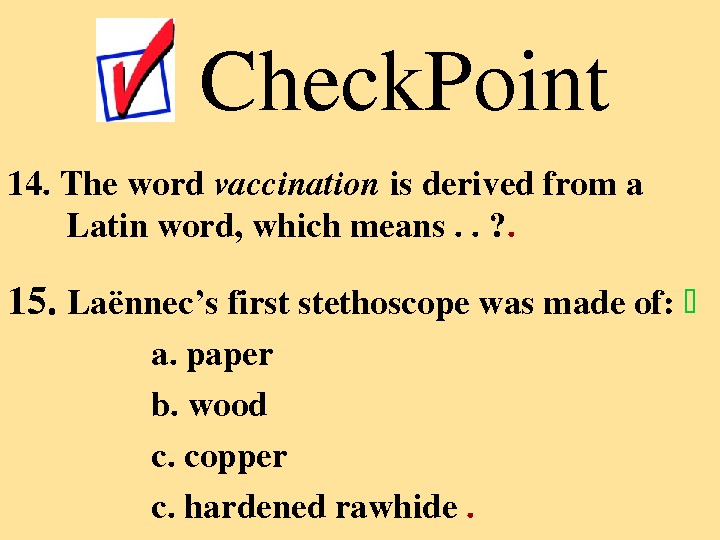
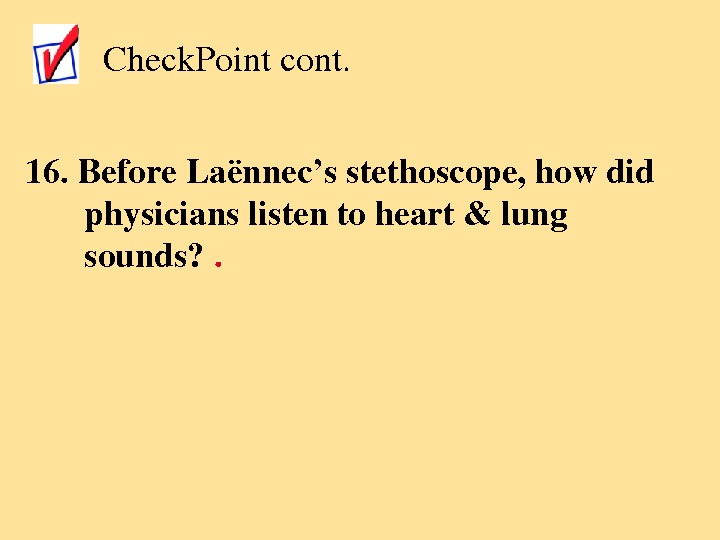

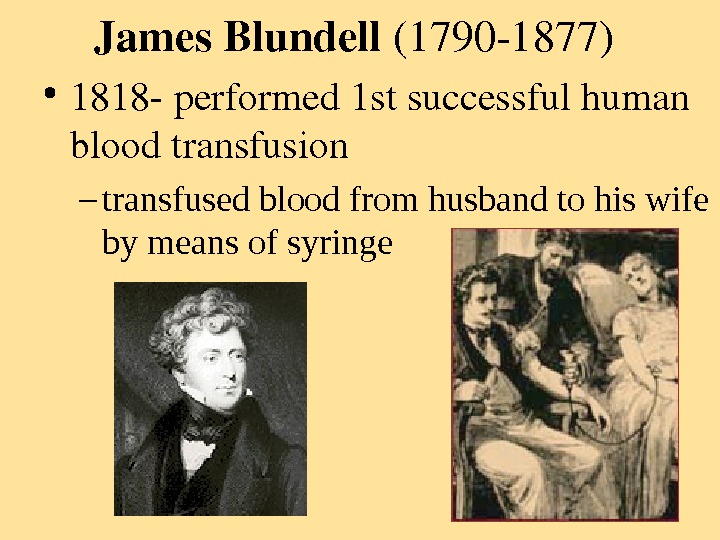

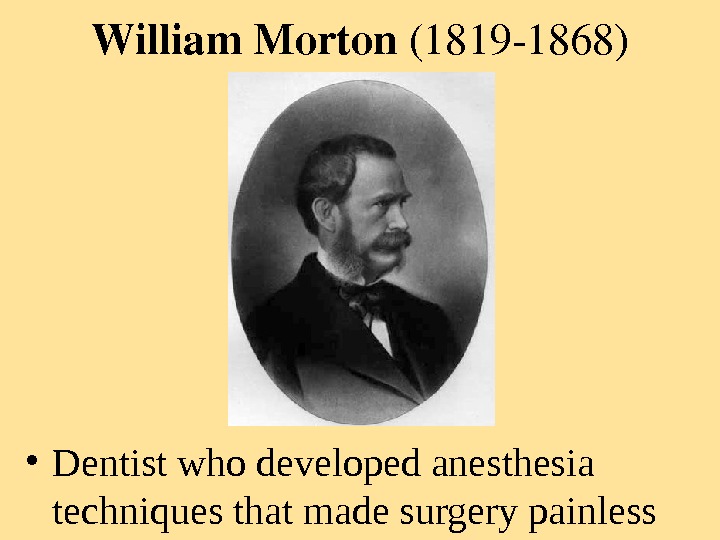
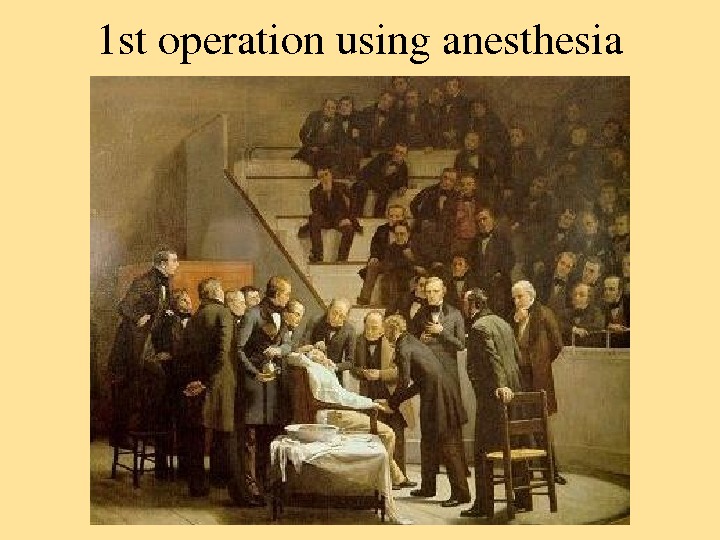
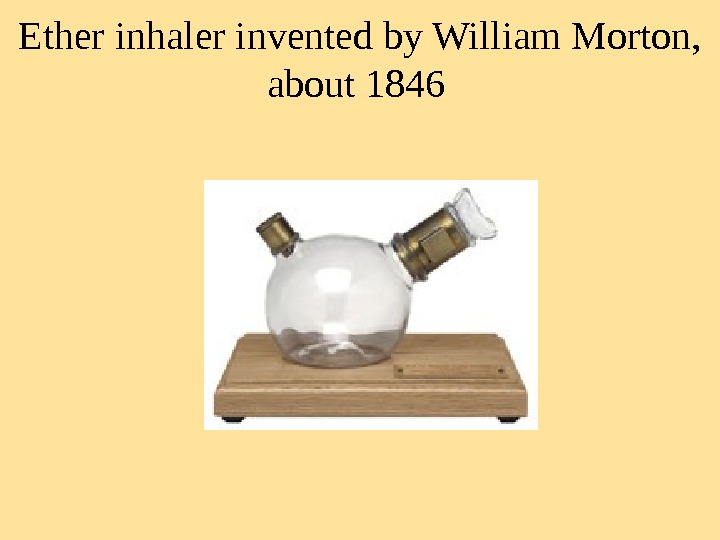
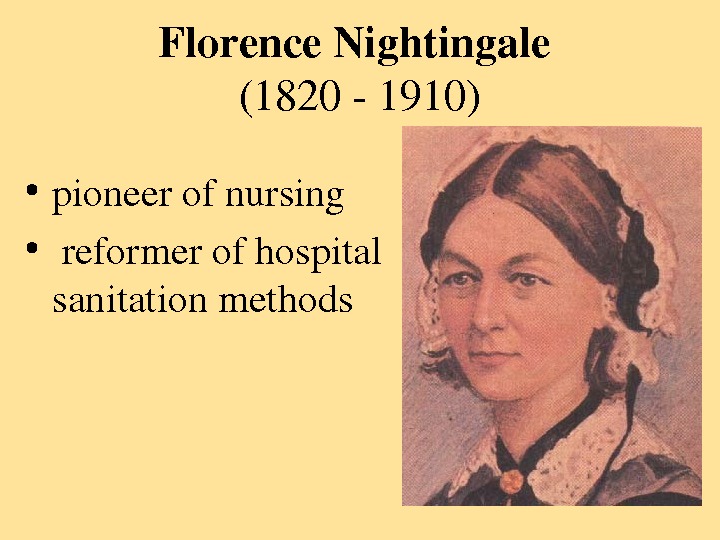
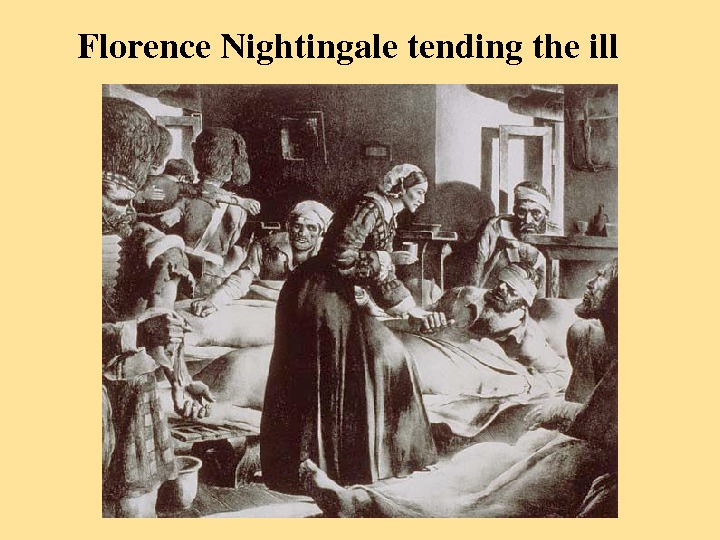
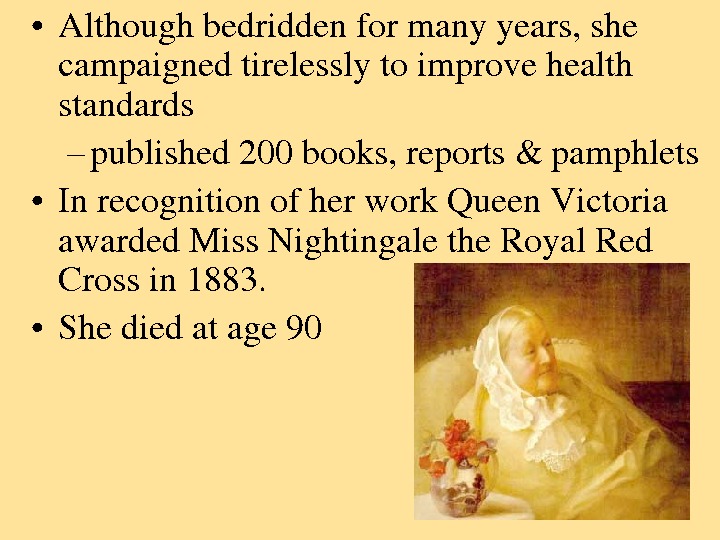

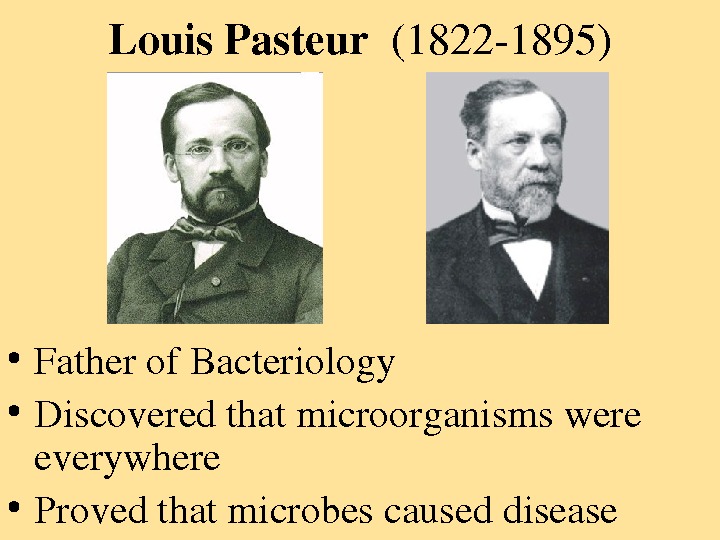

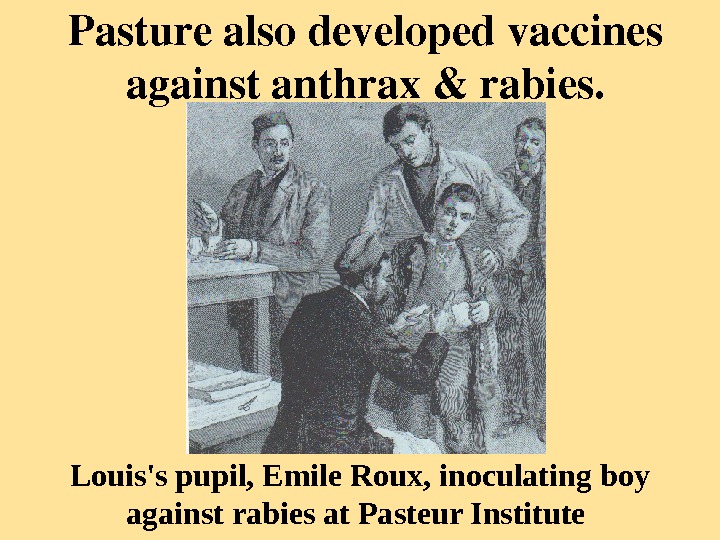

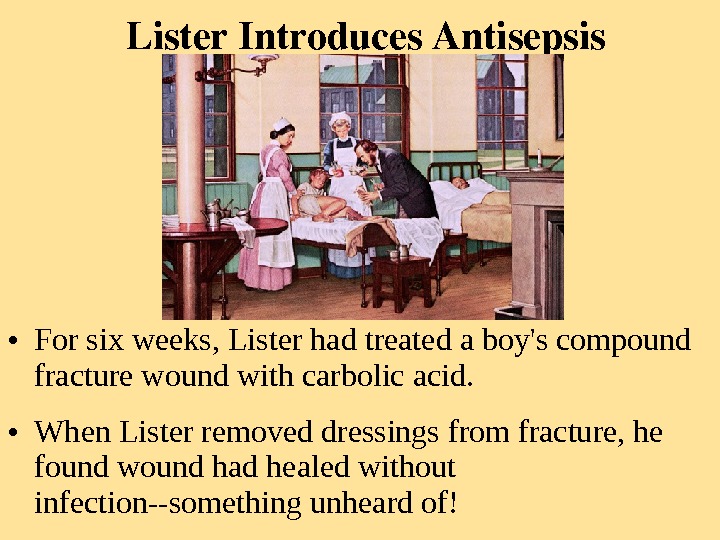
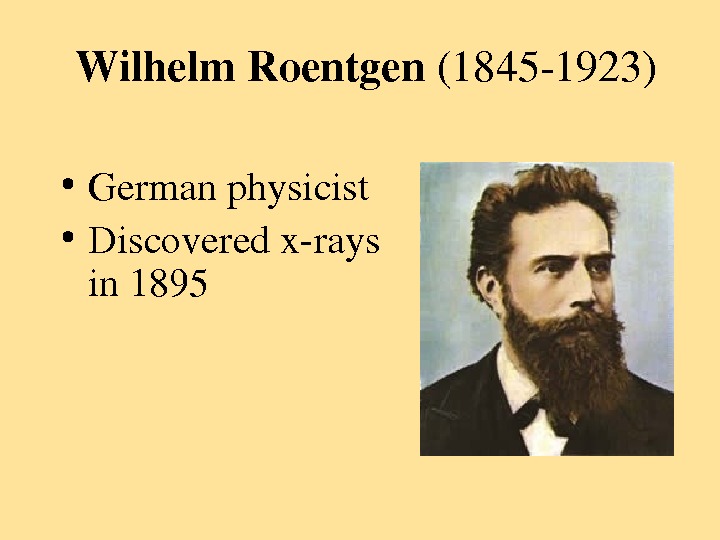
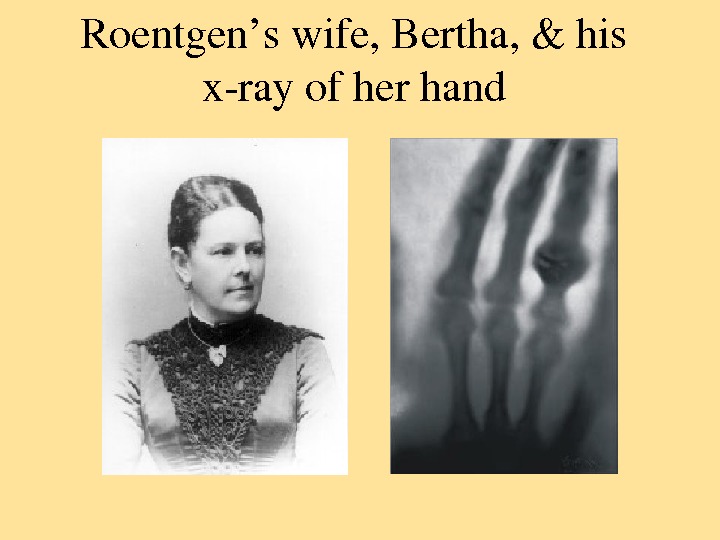
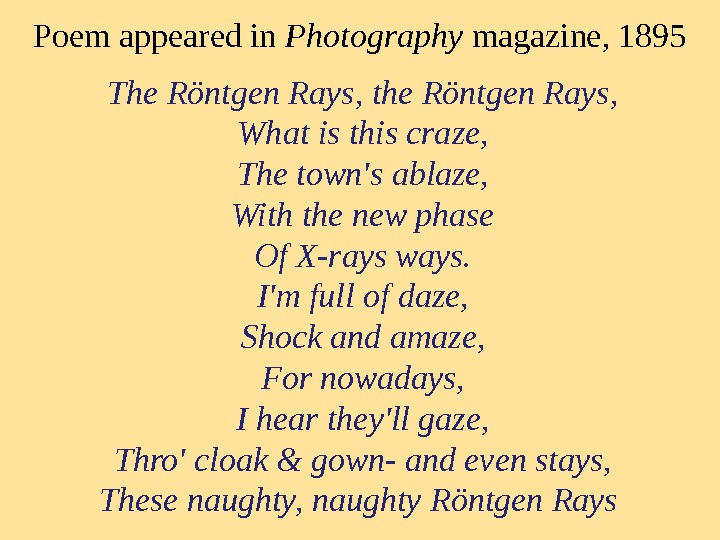
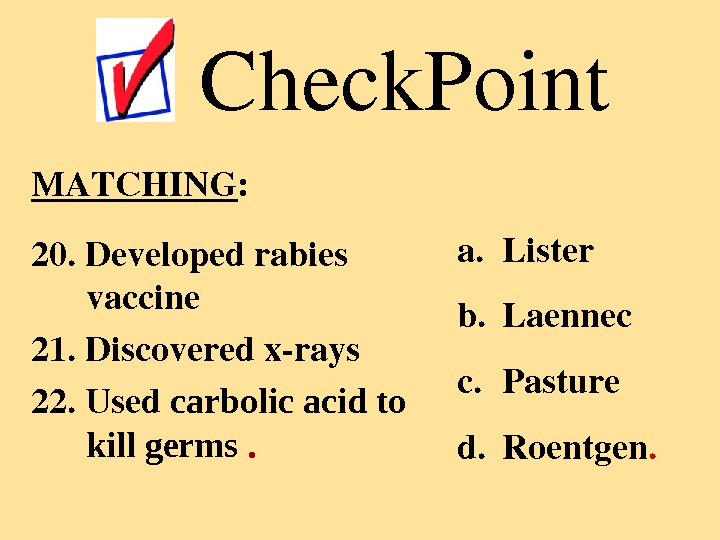
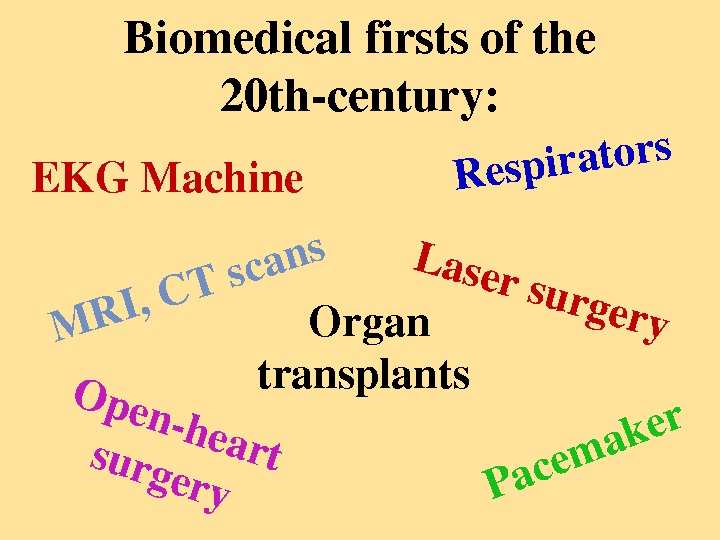
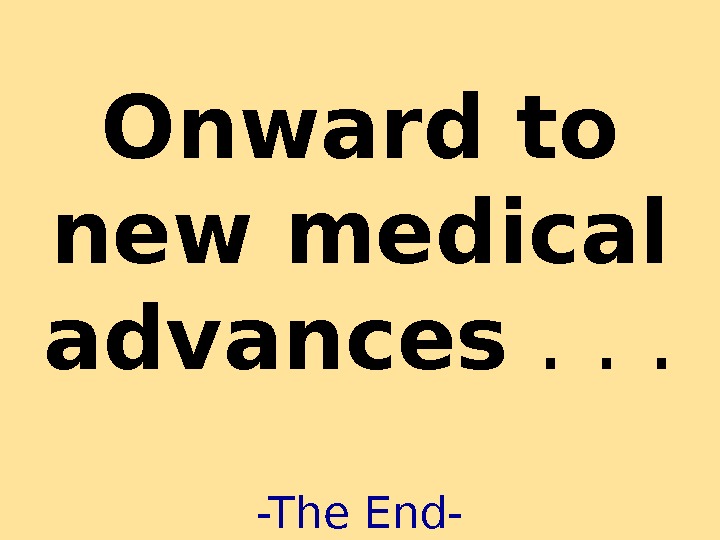
hx_of_disease_part_2_ppt.ppt
- Размер: 9.4 Mегабайта
- Количество слайдов: 67
Описание презентации Then&Now… diseaseandtechnologythroughtheages PartII AncientGreece 776BC • по слайдам
 Then&Now… diseaseandtechnologythroughtheages Part. II
Then&Now… diseaseandtechnologythroughtheages Part. II
 Ancient. Greece 776 BC • 1 sttostudy cause ofdisease lookedfor naturalexplanations notjust divineones A ncient. Greekgodof medicine&health • madediscoveriesinscience, math& astronomy
Ancient. Greece 776 BC • 1 sttostudy cause ofdisease lookedfor naturalexplanations notjust divineones A ncient. Greekgodof medicine&health • madediscoveriesinscience, math& astronomy
 Hippocrates , mostfamousofall ancient. Greekphysicians • basedknowledgeofanatomyon observationofexternalbody – humandissectionduringthistimewas taboo • responsibleforwritingoathofmedical ethics: Hippocratic. Oath • becameknownasthe“Fatherof. Modern Medicine”
Hippocrates , mostfamousofall ancient. Greekphysicians • basedknowledgeofanatomyon observationofexternalbody – humandissectionduringthistimewas taboo • responsibleforwritingoathofmedical ethics: Hippocratic. Oath • becameknownasthe“Fatherof. Modern Medicine”
 Greekthinkersemphasizedideaof balance inallthings. • Theideaofbalancewasreflectedby beliefin fourhumors ofhumanbody: – yellowbile – blackbile – blood – phlegm
Greekthinkersemphasizedideaof balance inallthings. • Theideaofbalancewasreflectedby beliefin fourhumors ofhumanbody: – yellowbile – blackbile – blood – phlegm
 Their. Balance. Theoryfor“fours”: • theorythat four elements: – earth, air, fire&water & • the four seasons: – summer, autumn, winter&spring • werealllinkedtothe four humors inhuman body
Their. Balance. Theoryfor“fours”: • theorythat four elements: – earth, air, fire&water & • the four seasons: – summer, autumn, winter&spring • werealllinkedtothe four humors inhuman body
 • doctorscouldrestorebalanceby, for example, bybloodletting Cuppingvessels forbloodletting scalpels • Believedthatimbalanceinanyofthese humors, elementsorseasonscausedillness
• doctorscouldrestorebalanceby, for example, bybloodletting Cuppingvessels forbloodletting scalpels • Believedthatimbalanceinanyofthese humors, elementsorseasonscausedillness
 1. Howmanyelementswereinvolved inthe“balancetheory”? . 2. Whatwasthe 1 stcodeofmedical ethicscalled? . 3. Nameoneofthebody’shumors. Check. Point
1. Howmanyelementswereinvolved inthe“balancetheory”? . 2. Whatwasthe 1 stcodeofmedical ethicscalled? . 3. Nameoneofthebody’shumors. Check. Point
 Check. Pointcont. 4. Imbalanceofthehumorsresulted in: a. badweather b. sometypeofillness c. adepletionofblood d. environmentaldisasters.
Check. Pointcont. 4. Imbalanceofthehumorsresulted in: a. badweather b. sometypeofillness c. adepletionofblood d. environmentaldisasters.
 Romans 9 th. Century. BC • Learnedaboutdisease&sanitationfrom Greeks • Developedsanitationsystemofaqueductsto bringcleanwatertocities • Builtsewerstocarryoffwaste • Builtpublicbathswithfilteringsystems Marksbeginningofpublichealth&sanitation.
Romans 9 th. Century. BC • Learnedaboutdisease&sanitationfrom Greeks • Developedsanitationsystemofaqueductsto bringcleanwatertocities • Builtsewerstocarryoffwaste • Builtpublicbathswithfilteringsystems Marksbeginningofpublichealth&sanitation.
 Aqueducts – • collected water from several natural springs, located far away from city • Water was chosen according to many factors: • position of its springs • purity of its water • its taste • alleged medical properties due to mineral salts
Aqueducts – • collected water from several natural springs, located far away from city • Water was chosen according to many factors: • position of its springs • purity of its water • its taste • alleged medical properties due to mineral salts
 • Gravity moved the water towards the city. – Aqueduct acted as a continuous slope – Water had to be drawn from springs located in hilly areas, above Rome’s position
• Gravity moved the water towards the city. – Aqueduct acted as a continuous slope – Water had to be drawn from springs located in hilly areas, above Rome’s position
 Ancient. Romanaqueduct. System
Ancient. Romanaqueduct. System
 Roman Sewers – carried waste away from cities Cutaway view of typical Roman street. Shows lead water pipes & central channel for sewage under pavement
Roman Sewers – carried waste away from cities Cutaway view of typical Roman street. Shows lead water pipes & central channel for sewage under pavement
 Ancient. Roman. Sewer undergroundsewers emptiedatstreams awayfromcities
Ancient. Roman. Sewer undergroundsewers emptiedatstreams awayfromcities
 Roman bath and spa—not just for bathing
Roman bath and spa—not just for bathing
 • Publicbathswerecheaptoenter, soboth rich&poorcouldaffordtogooften. • Men&womenbathedinseparatefacilities. • Peopledidnotgotobathsjusttogetclean. • Bathswereaplacetomeetfriends, relaxor gamble&playgames. • Peoplewouldhaveamassage, thenhave theirbodyscrubbeddownbefore swimminginoutdoorpool.
• Publicbathswerecheaptoenter, soboth rich&poorcouldaffordtogooften. • Men&womenbathedinseparatefacilities. • Peopledidnotgotobathsjusttogetclean. • Bathswereaplacetomeetfriends, relaxor gamble&playgames. • Peoplewouldhaveamassage, thenhave theirbodyscrubbeddownbefore swimminginoutdoorpool.
 5. The. Romanslearnedaboutdisease andhygienefrom. . 6. Romanaqueductscarried: a. cleanwatertocities b. sewageawayfromcities. Check. Point
5. The. Romanslearnedaboutdisease andhygienefrom. . 6. Romanaqueductscarried: a. cleanwatertocities b. sewageawayfromcities. Check. Point
 Check. Pointcont. 7. Onlyrichpeoplecouldaffordthe Romanbaths. a. True b. False.
Check. Pointcont. 7. Onlyrichpeoplecouldaffordthe Romanbaths. a. True b. False.
 Dark. Age(early. Middle. Age) AD 400800& High. Middle. Ages. AD 8001400 • Beginningof. Dark. Ages – Roman. Empirewas conqueredby. Huns
Dark. Age(early. Middle. Age) AD 400800& High. Middle. Ages. AD 8001400 • Beginningof. Dark. Ages – Roman. Empirewas conqueredby. Huns
 Hun Empire Roman Empire
Hun Empire Roman Empire
 Herecomesthe. Huns
Herecomesthe. Huns
 • Duringthistimechurchbegantodominate thepracticeofscience&medicine • Studyofmedicalscienceallbutstopped • Insteadofmedicalintervention, thechurch heldfasttobelief“healingthrough. Christ”
• Duringthistimechurchbegantodominate thepracticeofscience&medicine • Studyofmedicalscienceallbutstopped • Insteadofmedicalintervention, thechurch heldfasttobelief“healingthrough. Christ”
 Treatmentforillduringthistime: • Prayer • Exorcism • Saintlyrelics • Superstition
Treatmentforillduringthistime: • Prayer • Exorcism • Saintlyrelics • Superstition
 Terribleepidemicsduringthisperiod: • Bubonicplague (Black. Death) • Smallpox • Syphilis • Diphtheria • Tuberculosis Bubonicplaguewasresponsiblefordeathof 60 millionpeople
Terribleepidemicsduringthisperiod: • Bubonicplague (Black. Death) • Smallpox • Syphilis • Diphtheria • Tuberculosis Bubonicplaguewasresponsiblefordeathof 60 millionpeople
 The. Renaissance (AD 13501650) • Buildingofuniversities&medical schools • Searchfor newideas – (ratherthanunquestioning acceptance ofdiseaseaswillof. God)Periodwhichmarkedrebirthoflearning.
The. Renaissance (AD 13501650) • Buildingofuniversities&medical schools • Searchfor newideas – (ratherthanunquestioning acceptance ofdiseaseaswillof. God)Periodwhichmarkedrebirthoflearning.
 • Acceptanceofdissectionforstudy • Developmentofprintingpress& publishingbooks – (allowedmoreaccesstoknowledge fromresearch)
• Acceptanceofdissectionforstudy • Developmentofprintingpress& publishingbooks – (allowedmoreaccesstoknowledge fromresearch)
 8. Whoconqueredthe. Romanempire? a. Greeks b. Mesopotamians c. Germans d. Huns. 9. Whydidthestudyofmedicinecometo astopduringthe. Dark. Ages? . Check. Point
8. Whoconqueredthe. Romanempire? a. Greeks b. Mesopotamians c. Germans d. Huns. 9. Whydidthestudyofmedicinecometo astopduringthe. Dark. Ages? . Check. Point
 Check. Pointcont. 10. Approximatelyhowmanydeaths wasthe. Bubonicplagueresponsible for? a. sixthousand b. sixmillion c. sixtymillion.
Check. Pointcont. 10. Approximatelyhowmanydeaths wasthe. Bubonicplagueresponsible for? a. sixthousand b. sixmillion c. sixtymillion.
 11. Whatdoestheword“Renaissance” mean? a. rebirth b. academia c. newideas d. scholar. Check. Pointcont.
11. Whatdoestheword“Renaissance” mean? a. rebirth b. academia c. newideas d. scholar. Check. Pointcont.
 Discoveriesof. Sixteenth &Seventeenth. Centuries
Discoveriesof. Sixteenth &Seventeenth. Centuries
 Leonardoda. Vinci (14521519) • Italianartist, scientist, engineer • Studiedanatomyofbodybydissection ofhumancorpses
Leonardoda. Vinci (14521519) • Italianartist, scientist, engineer • Studiedanatomyofbodybydissection ofhumancorpses

 Antonvan. Leeuwenhoek 16321723 • Dutchman • Inventedmicroscopein 1673& discovered“animacules”
Antonvan. Leeuwenhoek 16321723 • Dutchman • Inventedmicroscopein 1673& discovered“animacules”
 • Leeuwenhoek’smicroscopewasalens mountedinatinyholeofabrassplate. • Heheldittothelighttoseehisspecimen.
• Leeuwenhoek’smicroscopewasalens mountedinatinyholeofabrassplate. • Heheldittothelighttoseehisspecimen.
 12. Leonardoda. Vinci isknownas: a. anengineer b. anartist c. ascientist d. all. Check. Point
12. Leonardoda. Vinci isknownas: a. anengineer b. anartist c. ascientist d. all. Check. Point
 Check. Pointcont. 13. What is the name Leeuwenhoek used to describe microorganisms? a. microbes b. organelles c. animacules d. pathogens.
Check. Pointcont. 13. What is the name Leeuwenhoek used to describe microorganisms? a. microbes b. organelles c. animacules d. pathogens.
 Discoveriesof Eighteenth. Century
Discoveriesof Eighteenth. Century
 Edward. Jenner (17491823) • Countrydoctorin England • Foundvaccination – protectedpeople againstsmallpox
Edward. Jenner (17491823) • Countrydoctorin England • Foundvaccination – protectedpeople againstsmallpox
 • Jenner observed that milkmaids who caught less serious cowpox generally did not catch smallpox. • Led him to discover technique of vaccination when he deliberately infected a small boy with cowpox.
• Jenner observed that milkmaids who caught less serious cowpox generally did not catch smallpox. • Led him to discover technique of vaccination when he deliberately infected a small boy with cowpox.
 • Jenner found that this gave the child immunity against deadly smallpox.
• Jenner found that this gave the child immunity against deadly smallpox.
 Theword”vaccination, » madeupby. Jennerforhistreatment (comesfrom. Latin vacca , acow). Wordlateradoptedby. Pasteurfor immunizationagainstanydisease.
Theword”vaccination, » madeupby. Jennerforhistreatment (comesfrom. Latin vacca , acow). Wordlateradoptedby. Pasteurfor immunizationagainstanydisease.
 Rene. Laënnec (17811826) • Frenchphysician • Inventedcylinder stethoscope – Originallymadefrom paper; latermadefrom hallowwoodentube • Hailedas Fatherof Thoracic. Medicine
Rene. Laënnec (17811826) • Frenchphysician • Inventedcylinder stethoscope – Originallymadefrom paper; latermadefrom hallowwoodentube • Hailedas Fatherof Thoracic. Medicine
 Beforestethoscope, doctorsputeardirectlytobody
Beforestethoscope, doctorsputeardirectlytobody
 Whatledtoinventionofstethoscope? • Laënnec: “ In 1816, Iwasconsultedbyayoungwoman laboringundergeneralsymptomsofdiseased heart, andinwhosecasepercussionandthe applicationofthehandwereoflittleavailonthe accountofthegreatdegreeoffatness…” • “ Irolledaquireofpaper(24 sheets)intoakind ofcylinderandappliedoneendofittotheregion oftheheartandtheothertomyear. ”
Whatledtoinventionofstethoscope? • Laënnec: “ In 1816, Iwasconsultedbyayoungwoman laboringundergeneralsymptomsofdiseased heart, andinwhosecasepercussionandthe applicationofthehandwereoflittleavailonthe accountofthegreatdegreeoffatness…” • “ Irolledaquireofpaper(24 sheets)intoakind ofcylinderandappliedoneendofittotheregion oftheheartandtheothertomyear. ”
 14. Theword vaccination isderivedfroma Latinword, whichmeans. . ? . Check. Point 15. Laënnec’sfirststethoscopewasmadeof: a. paper b. wood c. copper c. hardenedrawhide.
14. Theword vaccination isderivedfroma Latinword, whichmeans. . ? . Check. Point 15. Laënnec’sfirststethoscopewasmadeof: a. paper b. wood c. copper c. hardenedrawhide.
 Check. Pointcont. 16. Before. Laënnec’sstethoscope, howdid physicianslistentoheart&lung sounds? .
Check. Pointcont. 16. Before. Laënnec’sstethoscope, howdid physicianslistentoheart&lung sounds? .
 Nineteenth. Century Disease&Medicine
Nineteenth. Century Disease&Medicine
 James. Blundell (17901877) • 1818 performed 1 stsuccessfulhuman bloodtransfusion – transfused blood from husband to his wife by means of syringe
James. Blundell (17901877) • 1818 performed 1 stsuccessfulhuman bloodtransfusion – transfused blood from husband to his wife by means of syringe
 • Blundell performed 10 transfusions up to 1830 – about half were successful • At this point, blood typing had not been developed & transfusions were risky. • In 1870’s, doctors began using milk from cows, goats & humans, as blood substitute • This was replaced with saline solution in 1880’s
• Blundell performed 10 transfusions up to 1830 – about half were successful • At this point, blood typing had not been developed & transfusions were risky. • In 1870’s, doctors began using milk from cows, goats & humans, as blood substitute • This was replaced with saline solution in 1880’s
 William. Morton (18191868) • Dentist who developed anesthesia techniques that made surgery painless
William. Morton (18191868) • Dentist who developed anesthesia techniques that made surgery painless
 1 stoperationusinganesthesia
1 stoperationusinganesthesia
 Ether inhaler invented by William Morton, about
Ether inhaler invented by William Morton, about
 Florence. Nightingale (18201910) • pioneerofnursing • reformerofhospital sanitationmethods
Florence. Nightingale (18201910) • pioneerofnursing • reformerofhospital sanitationmethods
 Florence. Nightingaletendingtheill
Florence. Nightingaletendingtheill
 • Althoughbedriddenformanyyears, she campaignedtirelesslytoimprovehealth standards – published 200 books, reports&pamphlets • Inrecognitionofherwork. Queen. Victoria awarded. Miss. Nightingalethe. Royal. Red Crossin 1883. • Shediedatage
• Althoughbedriddenformanyyears, she campaignedtirelesslytoimprovehealth standards – published 200 books, reports&pamphlets • Inrecognitionofherwork. Queen. Victoria awarded. Miss. Nightingalethe. Royal. Red Crossin 1883. • Shediedatage
 MATCHING : 17. Reformedhospitals; pioneerednursing 18. Successfulblood transfusions 19. developed anesthesia techniques. Check. Point a. Morton b. Nightingale c. Snow d. Blundell
MATCHING : 17. Reformedhospitals; pioneerednursing 18. Successfulblood transfusions 19. developed anesthesia techniques. Check. Point a. Morton b. Nightingale c. Snow d. Blundell
 Louis. Pasteur (18221895) • Fatherof. Bacteriology • Discoveredthatmicroorganismswere everywhere • Provedthatmicrobescauseddisease
Louis. Pasteur (18221895) • Fatherof. Bacteriology • Discoveredthatmicroorganismswere everywhere • Provedthatmicrobescauseddisease
 Theprocessofboilingaliquidtodestroybacteriais stillusedtoday; mostdairyproductsarepasteurized. Discoveredthatheatingofmilkkilled germshencetheterm“pasteurization”.
Theprocessofboilingaliquidtodestroybacteriais stillusedtoday; mostdairyproductsarepasteurized. Discoveredthatheatingofmilkkilled germshencetheterm“pasteurization”.
 Pasturealsodevelopedvaccines againstanthrax&rabies. Louis’s pupil, Emile Roux, inoculating boy against rabies at Pasteur Institute
Pasturealsodevelopedvaccines againstanthrax&rabies. Louis’s pupil, Emile Roux, inoculating boy against rabies at Pasteur Institute
 Sir. Joseph. Lister ( 18271912) • Discoveredthatcarbolic acidkilledgerms • Usedasanasepsisin surgery Carbolicacid sprayer
Sir. Joseph. Lister ( 18271912) • Discoveredthatcarbolic acidkilledgerms • Usedasanasepsisin surgery Carbolicacid sprayer
 Lister. Introduces. Antisepsis • For six weeks, Lister had treated a boy’s compound fracture wound with carbolic acid. • When Lister removed dressings from fracture, he found wound had healed without infection—something unheard of!
Lister. Introduces. Antisepsis • For six weeks, Lister had treated a boy’s compound fracture wound with carbolic acid. • When Lister removed dressings from fracture, he found wound had healed without infection—something unheard of!
 Wilhelm. Roentgen (18451923) • Germanphysicist • Discoveredxrays in
Wilhelm. Roentgen (18451923) • Germanphysicist • Discoveredxrays in
 Roentgen’swife, Bertha, &his xrayofherhand
Roentgen’swife, Bertha, &his xrayofherhand
 Poem appeared in Photography magazine, 1895 The Röntgen Rays, the Röntgen Rays, What is this craze, The town’s ablaze, With the new phase Of X-rays ways. I’m full of daze, Shock and amaze, For nowadays, I hear they’ll gaze, Thro’ cloak & gown- and even stays, These naughty, naughty Röntgen Rays
Poem appeared in Photography magazine, 1895 The Röntgen Rays, the Röntgen Rays, What is this craze, The town’s ablaze, With the new phase Of X-rays ways. I’m full of daze, Shock and amaze, For nowadays, I hear they’ll gaze, Thro’ cloak & gown- and even stays, These naughty, naughty Röntgen Rays
 MATCHING : 20. Developedrabies vaccine 21. Discoveredxrays 22. Used carbolic acid to kill germs . Check. Point a. Lister b. Laennec c. Pasture d. Roentgen.
MATCHING : 20. Developedrabies vaccine 21. Discoveredxrays 22. Used carbolic acid to kill germs . Check. Point a. Lister b. Laennec c. Pasture d. Roentgen.
 Biomedicalfirstsofthe 20 thcentury: Organ transplants Pacem aker Respirators O penheartsurgery. EKGMachine M RI, CTscans. Lasersurgery
Biomedicalfirstsofthe 20 thcentury: Organ transplants Pacem aker Respirators O penheartsurgery. EKGMachine M RI, CTscans. Lasersurgery
 Onward to new medical advances . . . -The End-
Onward to new medical advances . . . -The End-

